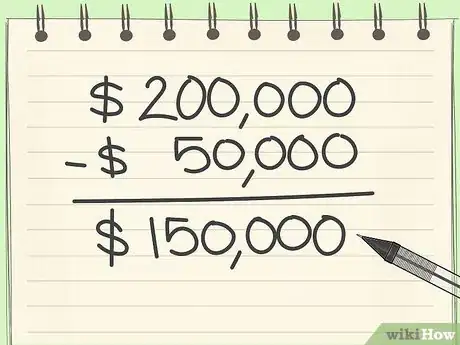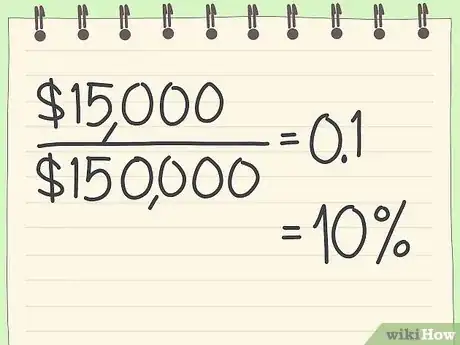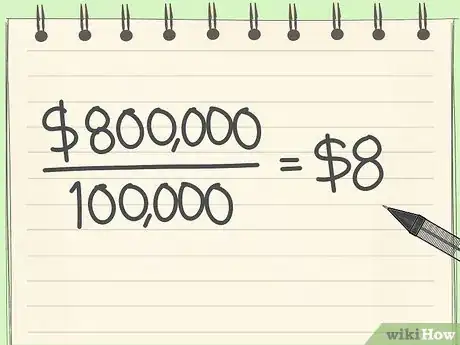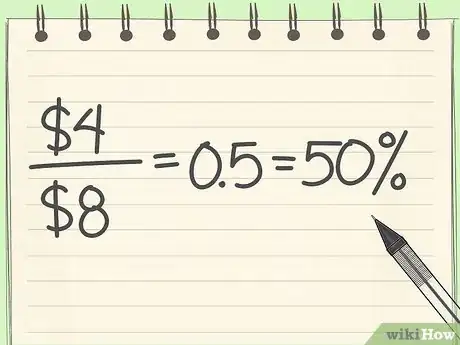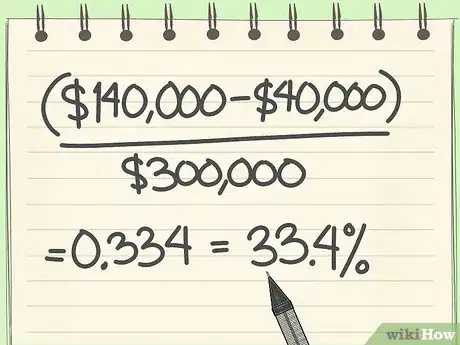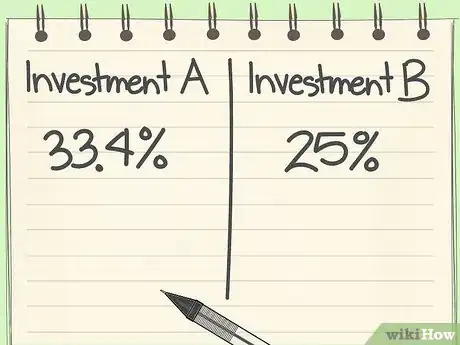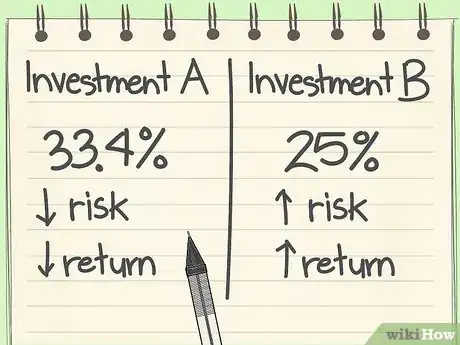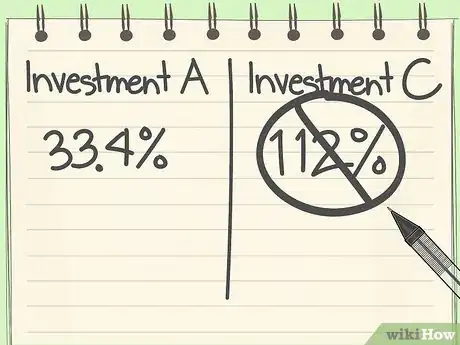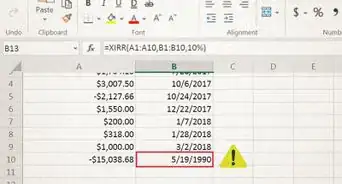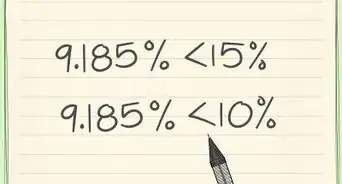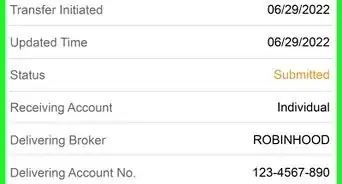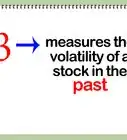This article was co-authored by Alex Kwan. Alex Kwan is a Certified Public Accountant (CPA) and the CEO of Flex Tax and Consulting Group in the San Francisco Bay Area. He has also served as a Vice President for one of the top five Private Equity Firms. With over a decade of experience practicing public accounting, he specializes in client-centered accounting and consulting, R&D tax services, and the small business sector.
There are 9 references cited in this article, which can be found at the bottom of the page.
This article has been viewed 209,664 times.
In finance, the dividend-payout ratio is a way of measuring the fraction of a company's earnings that are paid to investors in the form of dividends rather than being re-invested in the company in a given time period (usually one year).[1] In general, companies with higher dividend-payout ratios tend to be older, more established companies that have already grown significantly, while companies with low payout ratios tend to be younger companies with high growth potential. To find a business's dividend-payout ratio for a given time period, use either the formula Dividends paid divided by Net income or Yearly dividends per share divided by Earnings per share. Those formulas are equivalent to each other.[2]
Steps
Using Net Income and Dividends
-
1Determine the net income of the company. To find a company's dividend payout ratio, first find its net income for the time period you're analyzing (one year is the typical period for dividend payout ratio calculation). This information can be found in a company's income statement. [3] To be clear, you’re looking for the company’s income after all expenses, including taxes, costs of doing business, depreciation, amortization, and interest.
- For example, let's say that Jim's Light Bulbs, a new company, earned $200,000 in its first year of business, but it had to spend $50,000 on the expenses mentioned above. In this case, the net income for Jim's Light Bulbs would be 200,000 - 50,000 = $150,000.
-
2Determine the amount of dividends paid out. Find the amount of money that the company paid out in the form of dividends during the time period you're analyzing. Dividends are payments that are given to the company's investors instead of being saved or re-invested in the company. Dividends aren't usually listed on the income statement but are included on the balance sheet and statement of cash flows.[4]
- Let's say that Jim's Light Bulbs, being a relatively young company, decided to re-invest most of its net income by expanding its production capacity and only paid out $3,750 per quarter in dividends. In this case, we'll use 4 times 3,750 = $15,000 as our amount of dividends paid in the first year of business.
Advertisement -
3Divide the dividends by the net Income. Once you know how much a company has made in net income and paid out in dividends in a given time period, finding its dividend payout ratio is simple. Divide its dividend payments by its net income. The value you get is its dividend payout ratio.[5]
- For Jim's Light Bulbs, we can find the dividend payout ratio by dividing 15,000 by 150,000, which is 0.10 (or 10%). This means that Jim's Light Bulbs paid out 10% of its earnings to its investors and invested the rest (90%) back into the company.
-
1Determine the dividends per share. The method above isn't the only way to find a company's dividend payout ratio. It's also possible to find it with two other pieces of financial information. For this alternate method, start by finding a company's dividends per share (or DPS). This represents the amount of money that each investor received per share of stock owned. This information is usually included on quarterly quote pages, so you may need to add up multiple values if you're looking to analyze an entire year. [6]
- Let's look at another example. Rita's Rugs, an old, established company, doesn't have much room to grow in the current market, so rather than use its earnings to expand, it pays its investors well. Let's say that in Q1, Rita's Rugs paid $1 per share in dividends. In Q2, it paid $0.75. In Q3, it paid $1.50, and in Q4, it paid $1.75. If we want to find the dividend payout ratio for the whole year, we'd add 1 + 0.75 + 1.50 + 1.75 = $4.00 per share as our DPS value.
-
2Determine the earnings per share. Next find the company's earnings per share (EPS) for your time period. The EPS represents the amount of net earnings divided by the number of shares held by investors, or in other words, the amount of money each investor would receive if the company hypothetically paid out 100% of its earnings in dividends. This information is usually included on a company's income statement. [7]
- Let's say that Rita's Rugs has 100,000 shares of stock owned by investors and that it earned $800,000 in the last year of business. In this case, its EPS would be 800,000/100,000 = $8 per share.
-
3Divide the yearly dividend per share by the earnings per share. As with the method above, all that's left to do is compare your two values. Find your company's dividend payout ratio by dividing the dividends per share by the earnings per share.[8]
- For Rita's Rugs, the dividend payout ratio can be found by dividing 4 by 8, which is 0.50 (or 50%). In other words, the company paid out half of its earnings in the form of dividends to its investors in the past year.
Using Dividend Payout Ratios
-
1Account for special, one-time dividends. Strictly speaking, the dividend payout ratio accounts only for regular dividends paid to investors. However, sometimes, companies offer one-time dividend payments to all (or only some) of their investors. For the most accurate payout ratio values, these "special" dividends should not be included in dividend payout ratio calculations. Thus, the modified formula for calculating dividend payout ratios during periods that include special dividends is (Total dividends - Special dividends)/Net income.
- For example, if a company pays regular quarterly dividends totaling $1,000,000 over a year but also paid out one special $400,000 dividend to its investors after a financial windfall, we would ignore this special dividend in our payout ratio calculation. Assuming a net income of $3,000,000, the dividend payout ratio for this company is (1,400,000 - 400,000)/3,000,000 = 0.334 (or 33.4%).
-
2Use dividend payout ratios to compare investments. One way that people with money that they want to invest compare different investment opportunities is by looking at the history of dividend payout ratios that each opportunity has had. Investors generally consider the size of the ratio (in other words, whether the company pays a lot or a little of its earnings back to investors) as well as its stability (in other words, how widely the ratio varies from one year to the next). Different dividend payout ratios appeal to investors with different objectives. In general, both very low and very high payout ratios (as well as those that vary greatly or decrease over time) signal risky investments.[9]
-
3Pick high ratios for steady income and low ones for growth potential. As suggested above, there are reasons why both high and low payout ratios might be appealing to an investor. For someone who's looking for a secure investment that's likely to provide a steady income, high payout ratios can signal that a company has grown to the point that it doesn't need to invest heavily in itself, making for a safe investment. On the other hand, for someone who's looking to seize a lucrative opportunity in the hopes of making big earnings in the long run, low payout ratios can signal that a company is investing heavily in its future. If the company ends up becoming successful, this sort of investment will prove to be very lucrative. This can be risky, however, as the company's long-term potential is still unknown.
-
4Beware very high dividend payout ratios. A company that pays out 100% or more of its earnings as dividends might seem like a good investment, but, in fact, this may be a sign that a company's financial health is unstable. A payout ratio of 100% or greater means that a company is paying out more money to its investors than it is earning. In other words, it's losing money by paying its investors. Because this practice is often unsustainable, this can be a sign that a significant reduction in the payout ratio is coming.
- There are exceptions to this trend. Established companies with high potential for future growth can sometimes get away with offering payout ratios over 100%. For instance, in 2011 AT&T paid about $1.75 in dividends per share and only earned about $0.77 per share. That was a payout ratio of over 200%. However, because the company's estimated earnings per share in 2012 and 2013 were both well over $2 per share, the short-term inability to sustain its dividend payouts did not impact the company's long-term financial outlook.
Community Q&A
-
QuestionWhat are the different forms of dividend payouts?
 DonaganTop AnswererThe usual form is cash. Some companies issue dividends in the form of shares (or fractions of shares) of their own stock (or occasionally shares of another company's stock). In rare cases, a company may issue dividends in the form of products or services.
DonaganTop AnswererThe usual form is cash. Some companies issue dividends in the form of shares (or fractions of shares) of their own stock (or occasionally shares of another company's stock). In rare cases, a company may issue dividends in the form of products or services. -
QuestionDoes one have to invest for 12 months to receive the full dividend amount?
 DonaganTop AnswererNo, all you have to do is be the share owner of record on the day the dividend is declared. In theory, then, you could earn the dividends by owning the share(s) for just one day.
DonaganTop AnswererNo, all you have to do is be the share owner of record on the day the dividend is declared. In theory, then, you could earn the dividends by owning the share(s) for just one day. -
QuestionIf I know the dividend yield, how do I determine the exact amount of the dividend payout?
 Community AnswerSay the dividend yield is 10% and the stock price is $10 per share. Well 10% of $10 is $1. Each share you own will yield $1 in dividends with all else being equal.
Community AnswerSay the dividend yield is 10% and the stock price is $10 per share. Well 10% of $10 is $1. Each share you own will yield $1 in dividends with all else being equal.
Warnings
- Do not confuse the payout ratio with Dividend yield, which is calculated as follows:⧼thumbs_response⧽
- Dividend Yield= DPS(Dividend per share) / Market price of the stock⧼thumbs_response⧽
- It can also be calculated as Payout Ratio multiplied by EPS, divided by market price of a share.⧼thumbs_response⧽
References
- ↑ Alex Kwan. Certified Public Accountant. Expert Interview. 1 June 2021.
- ↑ https://www.investopedia.com/terms/d/dividendpayoutratio.asp
- ↑ http://www.investopedia.com/terms/n/netincome.asp
- ↑ http://www.accountingcoach.com/blog/dividends-financial-statements-2
- ↑ https://www.myaccountingcourse.com/financial-ratios/dividend-payout-ratio
- ↑ http://www.investopedia.com/terms/d/dividend-per-share.asp
- ↑ http://www.sec.gov/investor/pubs/begfinstmtguide.htm
- ↑ https://www.fool.com/knowledge-center/earnings-per-share.aspx
- ↑ https://www.dividend.com/dividend-education/the-truth-about-dividend-payout-ratio/
About This Article
The dividend payout ratio is the portion of a company’s earnings that is paid to investors in the form of dividends during a given time period, usually a year. To calculate the dividend payout ratio, all you need to do is divide the dividends paid by the net income. You can find the net income using the company’s income statements. Remember to exclude all expenses, such as taxes and interest. Calculate the amount of money that the company paid out as dividends next. You can find this information on the balance sheet. Once you have the net income and dividend information, simply divide the dividends by the net income to calculate the payout ratio. For more information on calculating the dividend payout ratio, like how to use these to compare investments, read on.

